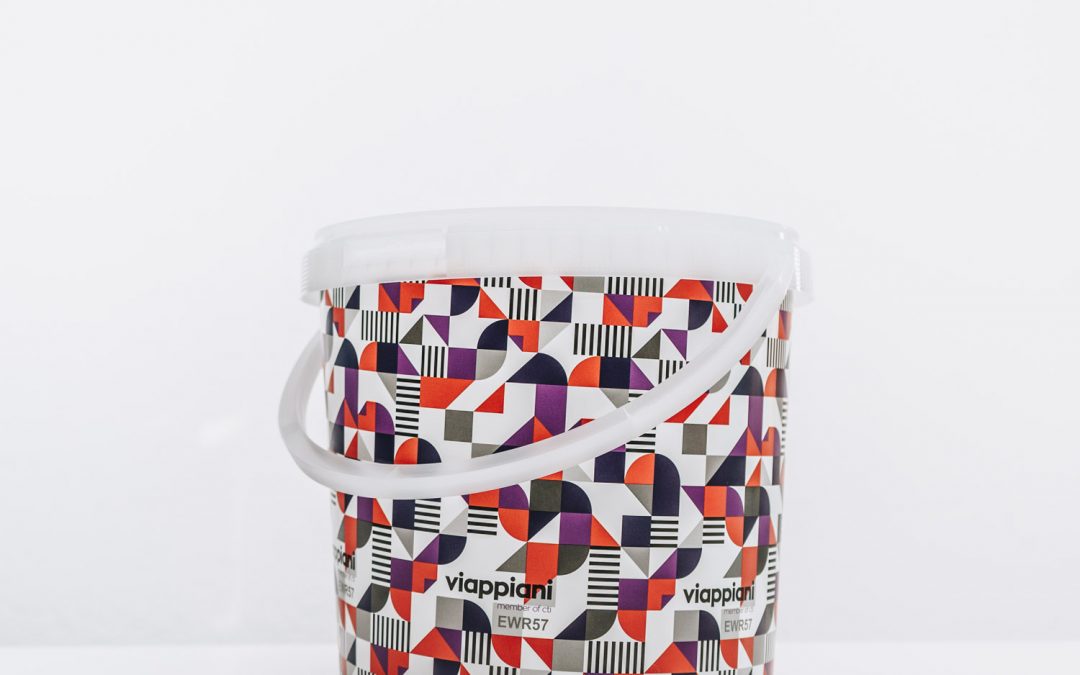(by Christian Lehner, Sales Manager at Viappiani Printing, Italy)
Bryholm Kunststofftechnik and Viappiani have been working together as partners for years when it comes to the decoration of packaging buckets. Together they have been able to convince many customers of the advantages of IML technology. Excellent print quality combined with optimized production processes at BKT can rightly be called a success story.
Viappiani was founded in 1929 and has 90 years of experience in printing, of which more than 35 years have been dedicated to the printing of In-Mould Labels (IML). This enables the company to offer a wide range of labels and IML solutions for all types of applications. The company offers products and services to meet the specific labelling needs of each customer, whether it is an existing project or an IML start-up project.
In-Mould Labelling (IML) was originally developed for blow moulding, but with injection moulding the efficiency of the whole process is increased.
IML technology is used for containers and other plastic parts directly in the injection mould. A pre-printed label, generally made of polypropylene (PP), is placed in an injection mould by a robot. Normally, static electricity is used, but in some cases also vacuum can be used. Charging electrodes charge a label as it is transferred from the dummy core to the mould. When the label is placed on the mould and released by the labelling robot, thanks to the static charge the label sticks to the mould. Plastic is then injected into the mould and takes the shape of the product as the label fuses with the moulded product. The end result is that packaging and label become one unit.
Advantages:
- Perfect adhesion to the container, even on curved surfaces and edges
- Production of a labelled container in one step
- Container and label are made of the same material, i.e. can be fully recycled
- Not removable (prevents counterfeiting)
- Possibility of a removable proof of purchase
- Increased speed of the packaging line
- Excellent resistance to heat, moisture and chemicals
The labels are printed generally on a plastic film, but in some cases also on paper. Polypropylene, or less frequently polystyrene, is commonly used as label material with thicknesses of 40 to 100 microns. These labels can have a matt or glossy surface, with various varnish options other design options such as spot varnish are possible. Foamed label material is also used. This is a coextruded material with a spongy layer bound between two very thin solid layers.
Thanks to a PLA based IML label today it is also possible to produce a certified 100% compostable container.
In-Mould Labelling is a convincing solution due to its excellent quality and is without doubt one of the most modern and revolutionary techniques for decorating containers, bottles and other plastic parts.
Round as well as square containers and lids of various sizes can be decorated with labels of up to eight colours.
At BKT you can currently choose IML decoration for the following bucket sizes:
- 1.1 litres
- 2.5 litres
- 5.6 litres
- 8.5 litres
- 10.5 litres
- 10.7 litres
- 11.4 litres
- 11.6 litres
Soon the 3.5 litre bucket and the 9 litre bowl will be added.

